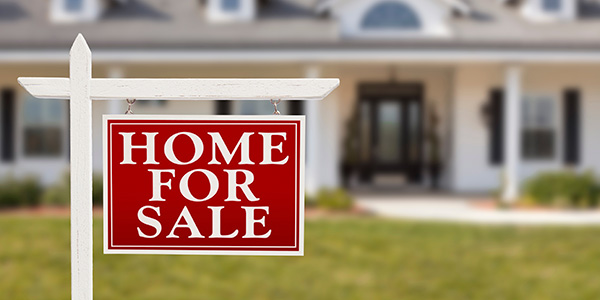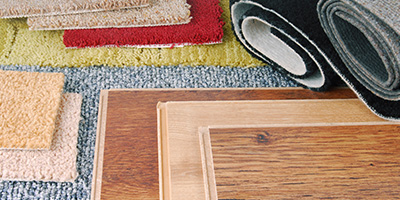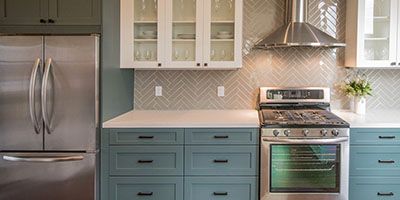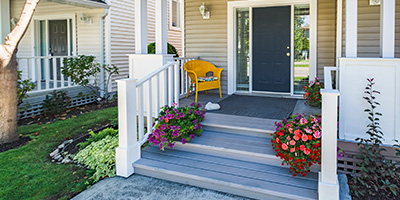House Flipping 101: How to Start Flipping Houses

House Flipping Tips for Beginners
When done correctly, home flipping can be an amazing investment opportunity. However, if you’re inspired to start flipping houses simply from watching TV shows, there’s a lot of planning behind the scenes that you should consider before making such a big commitment.
Set yourself up success with our top tips to start flipping houses for a profit, along with expert insights on the real estate market, financing options and the importance of home inspections.
8 Essential Tips for Flipping Houses
1. Be Thorough With Your Budgeting
When starting a house flipping project, it’s crucial to be smart with the initial planning and budgeting stages. You should budget for every possible scenario, including what repairs will cost, what your labor costs will be, what your selling costs will be and how much you’ll need to save for holding costs if the house doesn’t sell right away.
It’s also important to figure out your After Repair Value, or ARV, which is what a home will be worth after it’s been fixed up. This simple calculation takes a property’s current value and the value of renovations, to help you determine if you’ll make a profit, break even or lose money on a deal. Ultimately, ARV helps you determine if a property is worth buying.

“Many flippers use the 70 percent rule to come up with a broad idea if the property will work to flip. The 70 percent rule states the property should be bought for 70 percent of the ARV (after repaired value), minus any repairs needed.
So, if the house will be worth $200,000 when it is fixed up and the repairs will cost $30,000, the buyer should pay: $110,000 ($200,000 times 0.7 minus $30,000).”
Mark Ferguson, InvestFourMore
Do your research to understand your financing options, if you have cash or private money from personal investors, or if you’ll be obtaining a bank or hard money loan. Hard money lenders tailor services to house flippers and often let you borrow more than traditional banks, but these funds come with much higher interest rates.
Beyond your initial budgeting, make sure to organize and save all documents along the way, such as documents of purchases, receipts, permits, inspections and bills.

“Before flipping a house you must know the numbers, and not [just the numbers you see on TV], but the real numbers. What will the house be worth, what will the repairs cost, what will the carrying costs be, how much will the financing cost if you are getting a loan, what will the selling costs be and what will the buying costs be.”
Mark Ferguson, InvestFourMore
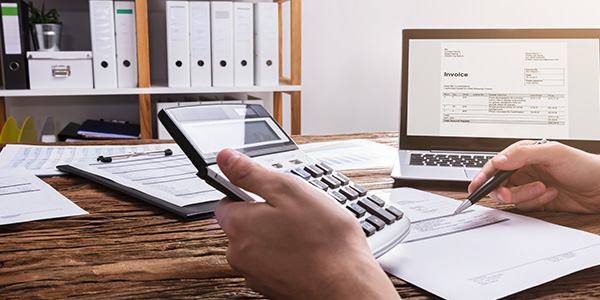
2. Research the Neighborhood Before Purchasing
Before purchasing a house to flip, know the area where you’re buying. A common mistake first-time home flippers make is putting more into the purchase and renovation costs than the house will be appraised and sell for. You’ll need to know comparable prices in the area before making this investment. Be aware of all factors that will go into selling, such as market conditions, trends on how long homes in the area are on the market, and the health of nearby school systems.
Industry experts recommend buying the worst, cheapest house in the best neighborhood you can afford for a flip.

“To really get a feel for what a neighborhood is like, talk to people that live there and visit the area yourself at different days and times. For example, go to the neighborhood at 11 p.m. on a Friday night, on a Tuesday around 5 p.m. and on a Thursday at 7 a.m. to get the full picture. See what’s going on, what you hear, what traffic noise is like and, most importantly, if you feel safe.”
Mike Hills, Atlas Real Estate
3. Have a Professional Inspection Completed
The cost of a professional inspection is minimal when compared to the potential costs of fixing serious faults of the home. Foundation problems, structural issues, outdated electrical wiring and a roof that needs to be replaced are prime examples of costly flaws you should know about before putting in an offer.
Protect yourself, and do your due diligence before making the large time and financial commitment of buying a home to flip. Especially if you’re flipping a house for the first time, you should start small with a fixer upper, as opposed to taking on a full house rehab.

“One of the biggest mistakes I see first-time home flippers make is not understanding what home inspectors look for. Half the inspection is just turning things on and making sure they work. Flippers should hire a home inspector, follow them around and ask lots of questions. Cosmetic items like new carpet, trim and paint may get offers on the house – but problems with the roof, furnace and electrical systems stop the sale from happening. Over time, you’ll learn to think like an investor and a home inspector at the same time.”
Scott Brown, Brightside Home Inspections
Buying an old house to flip? Learn what to look for before making your purchase!
4. Make a Reasonable Timeline
When planning a timeline for your house flipping project, be practical and prepare for the unexpected. Give yourself plenty of time, and set realistic goals for project completion, with back-up plans for when you encounter hiccups. In addition, you should plan to make the major fixes first.
Prioritize big-ticket items, such as kitchen and bathroom remodels, as these typically take up more time and money to complete, but have the greatest impact on resale value. This way, if plans change or if you fall behind schedule, the most important parts of your renovation have already been completed.

“There are many books and resources available to figure out what it takes to flip a house. YouTube has a ton of videos on the time it takes and the costs to repair houses. You also need to talk to contractors and specialists like plumbers, electricians, etc. Once you have a rough idea of how long it will take and how much it will cost, increase that number by at least 25%! It always takes longer and costs more than you think, especially for those who have not done this before.”
Mark Ferguson, InvestFourMore
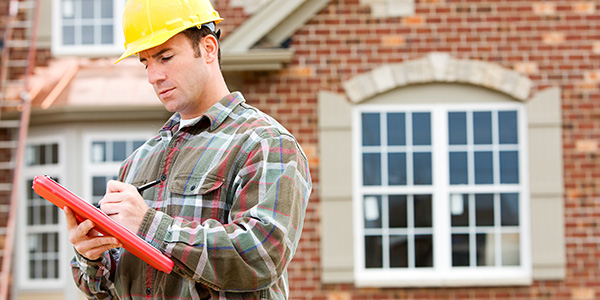
5. Work With Reputable Professionals
Perhaps the biggest piece of advice for home flipping is to understand your skill set, knowing which jobs are DIY-friendly and which ones you can’t handle on your own. You can save money by doing small projects such as painting and tearing out carpet yourself. However, projects such as full kitchen or bathroom renovations, changing the layout of a room, electrical, plumbing or HVAC work should be done by a certified professional.
If you’re taking on the full rehab of a house, you may consider working with a general contractor to coordinate projects. Contractor and HGTV personality Mike Holmes refers to general contractors as your “quarterback” when you’re working on multiple projects that require different specialties, like in kitchen or bathroom remodels. You can also consult your contractor to see if you need any permits from the city for updates to be made. Before starting work, make sure you’re familiar with local codes and building restrictions.
It’s also helpful for first-time home flippers to work with a realtor. Real estate agents will have tons of knowledge about the neighborhoods, market conditions and comparable sales in your area. Agents can help you with negotiations, both in getting a better deal when you purchase and selling the home more quickly than you might have on your own.

“Price out all the home inspection findings by discussing with contractors that can do the work. Add this total to the cosmetic budget, and you’re probably close to a worst-case scenario remodeling budget.
Also, don’t neglect big ticket items. Hiring an HVAC pro to come out and service the heating and cooling systems is an inexpensive way to really boost the confidence of potential buyers. Then, you have documentation that certifies everything is in working order, while also signaling to buyers you aren’t trying to cut corners.”
Scott Brown, Brightside Home Inspections
6. Have a Cleanup Plan in Place
Before you begin tearing out cabinets, replacing floors or installing new countertops, you should have a cleanup plan in place. When flipping houses for profit, you’re likely on a limited budget and timeline. Having a roll off dumpster in the driveway can be very useful for home renovation projects, allowing you to clean up at your own pace and saving countless trips to a landfill. You can learn more about renting a dumpster for remodeling debris, and see which size is best for your job.
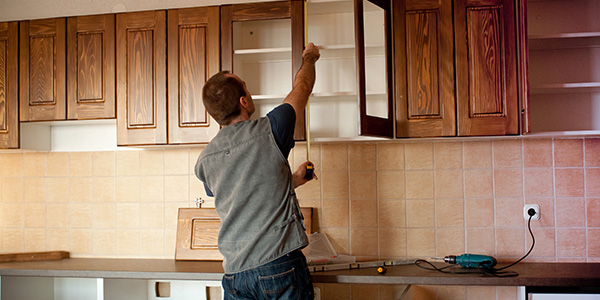
7. Avoid Over-Improving the Home
When flipping a house for the first time, it can be difficult to keep your emotions and personal design vision from taking over. However, in order to be successful and make a profit while flipping houses, you’ll need to be strategic about updates you make. For example, if the other homes in the neighborhood have laminate countertops, carpeting and builder-grade cabinets, you likely won’t see an ROI on installing a marble island, new hardwood and custom cabinets.
Focus on making basic, necessary upgrades over trendy, expensive ones. Your goal is to flip the home quickly, not remodel it to your own taste.

“Lots of flippers make the mistake of over-improving. Don’t put in expensive features just because you personally like them – be practical. Look for a comparable model home, selling for a similar price at a similar time, and keep seasonality in mind for cost comparison. Take that comp, and build your house to match.”
Mike Hills, Atlas Real Estate
8. Stage the Home for Selling
When you’re ready to list the house, a simple staging of the home can go a long way. Buyers want to be able to see themselves living in a home before making an offer, so important home staging considerations include tidying up the yard, painting and decorating in neutral colors, deep cleaning each room and eliminating clutter.
The key to flipping a house for profit is to price the home to sell, while still leaving some room for negotiations. If priced too high, the house will sit on the market and increase your holding costs, which decreases your potential profits overall. If you’re working with a realtor, they can help you figure out an appropriate asking price, set up online listings and plan open houses.

“Take your time figuring out how the business works before you jump into a project, and start with something that does not need a full gut job. Some of the biggest mistakes come from massive projects. Start small and easy, and even if you don’t make much money, it limits your exposure to massive losses and you learn a ton once you do a project.”
Mark Ferguson, InvestFourMore
Turning your house into an Airbnb? Check out our guide on how to turn your house into a rental!
